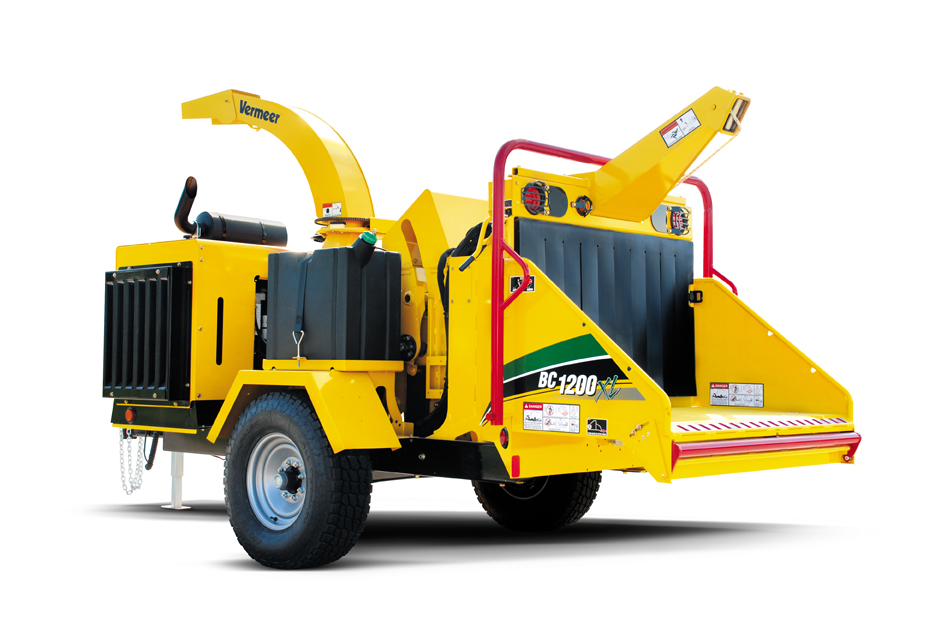Taking time at the end of the work day to inspect and do routine maintenance on your brush chipper is one of the best ways to help ensure that the machine is ready to go back to work the next morning and to keep functioning productively for your tree care business.
Gary McKeag, brush chipper service technician at Vermeer Corporation, says if you address the following two important maintenance issues, you will go a long way toward having a chipper that delivers top performance. They are:
- Grease the cutter drum or disc bearings at the end of the day when everything is still warm. Apply grease until you see the old grease coming out. This removes any debris and forces out any moisture that could corrode bearings overnight.
- Check the knives. A visual inspection is mandatory. Look for debris buildup; look at the condition of the knives.The knives are the cutting apparatus of the machine, so it is critical that you maintain them. Don’t wait until they are dull and act like hammers. By that time your productivity will be lagging and it will be hard on the bearings. Also, periodically check the torque on the knife mounting hardware according to instructions in the machine maintenance manual.
In addition, McKeag suggests brush chipper owners should also pay daily attention to the engine compartment and radiator. With the movement toward new engine emission standards, increased engine operating temperatures require larger radiator and fan packages to move air and keep engine temperatures in line. A plugged radiator can raise engine temperatures and may cause a shutdown. Regularly blowing out engine compartments reduces high temperatures from “fines” that pass through the radiator.
Take time to clean the machine by using an air compressor or leaf blower to keep debris from building up. Too much debris behind the feed rollers will not allow them to fully open. The cleaner the machine, the better it is going to run. Once the machine has been cleaned, you can easily inspect it to make sure items, such as shielding, switches, control bars and hitching components are in good working order.
It’s also important to walk around the machine at the beginning and end of each day and check for anything that could reduce productivity, such as a loose hydraulic line, clamp or fitting, a worn hose or missing hardware.

“The general maintenance items mentioned here will help enhance machine productivity and longevity. Always follow the recommended maintenance practices provided by the manufacturer,” says McKeag. “There is a night-and-day difference between a well-maintained brush chipper and a poorly maintained machine.” Your tree care business depends on efficient, productive equipment. Don’t take shortcuts in maintaining your chipper. The greater your investment in quality maintenance and repairs, the longer equipment life and potentially smarter tree care business you will run.
